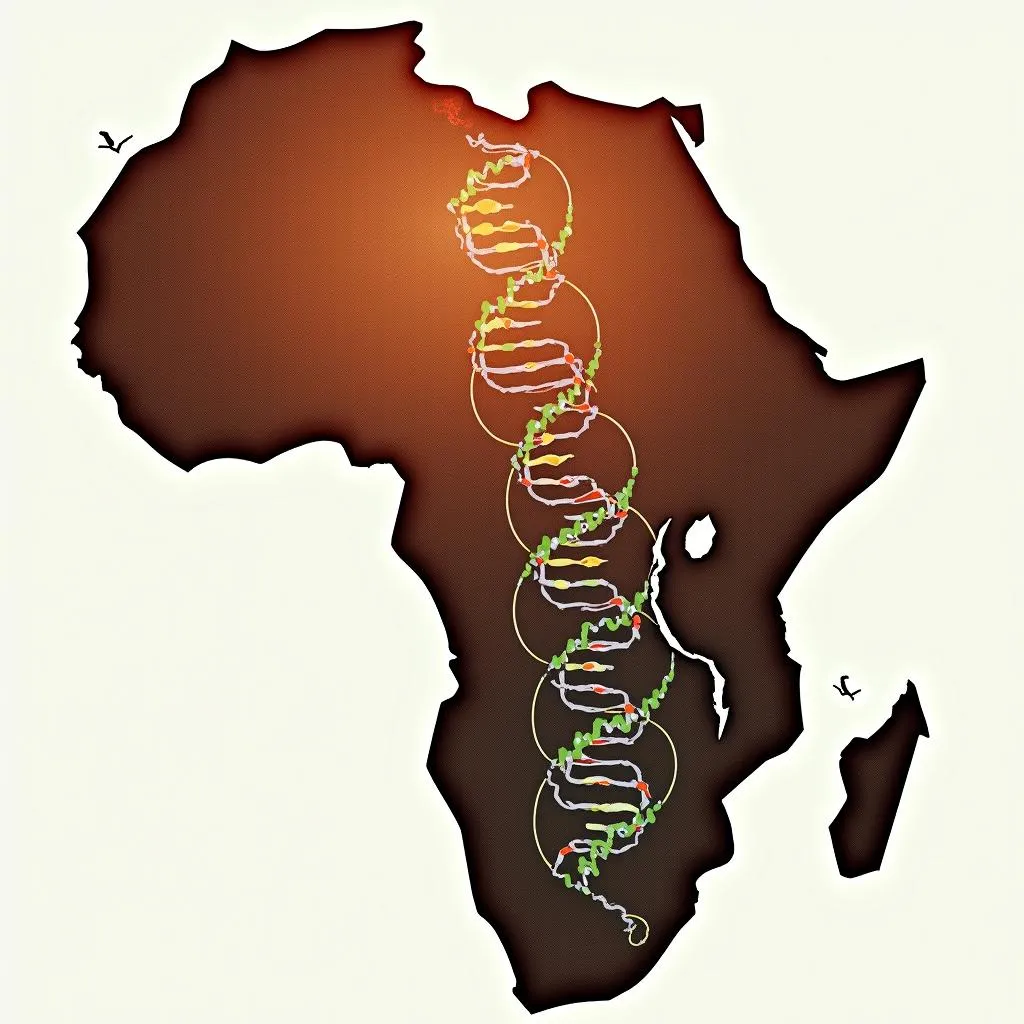African Continent Splitting in Two: Understanding the Geological Phenomenon
The African continent splitting in two, a captivating geological process driven by the East African Rift System (EARS), has garnered significant attention. This fascinating phenomenon, documented by publications like The Hindu and others, is reshaping the African landscape and offers a glimpse into the Earth’s powerful tectonic forces.
The Science Behind the African Continent Splitting
The splitting of the African continent is a complex geological process primarily driven by plate tectonics. The East African Rift System, a network of valleys and volcanoes stretching thousands of kilometers, is the epicenter of this activity. The rift is caused by the divergence of the Nubian and Somali tectonic plates, pulling the continent apart at a rate of a few millimeters per year. This gradual separation is creating a new plate boundary, ultimately leading to the formation of a new ocean basin in millions of years.
What is the East African Rift System (EARS)?
The East African Rift System (EARS) is a series of valleys and volcanoes extending over 3,000 kilometers from the Afar region in the north to Mozambique in the south. This active rift zone is where the African plate is slowly tearing apart.
The rifting process involves the upwelling of magma from the Earth’s mantle, causing the crust to thin and stretch. This stretching leads to the formation of faults and fractures, creating the characteristic valleys and volcanoes seen along the rift. Over millions of years, this process will continue to widen the rift, eventually leading to the formation of a new ocean.
The Impact of the Split on the African Landscape
The ongoing splitting of the African continent is having a profound impact on the landscape and ecosystems. The formation of new valleys and volcanoes creates unique habitats, while also potentially isolating existing populations of plants and animals. The changing topography can also affect weather patterns and water resources.
How will this impact African nations?
The continued rifting will reshape national boundaries and could lead to the emergence of new landmasses and coastlines. This will have significant implications for resource management, infrastructure development, and potentially even political stability in the region.
The Future of the African Continent
The African continent splitting in two is a slow but ongoing process. While the complete separation is projected to take millions of years, the current changes are already having observable effects. Scientists continue to monitor the rift closely, using various techniques to study the underlying geological mechanisms and predict future developments. Understanding this phenomenon is crucial for mitigating potential risks and harnessing the opportunities presented by this dynamic geological process.
What are the long-term geological predictions?
Geological models suggest that the rifting will eventually lead to the formation of a new ocean basin, separating the eastern portion of Africa from the rest of the continent. This process will dramatically alter the geography of the region and potentially lead to the formation of a new island or continent.
Conclusion
The African continent splitting in two, as highlighted by The Hindu and other sources, is a testament to the dynamic forces shaping our planet. This ongoing geological phenomenon, driven by the East African Rift System, offers a unique opportunity to study plate tectonics in action and understand the long-term evolution of continents. While the complete separation is far in the future, the current changes are already impacting the African landscape and its people.
FAQ
- How fast is the African continent splitting? The separation is occurring at a rate of a few millimeters per year.
- When will the African continent completely split? The complete separation is projected to take millions of years.
- What is causing the split? The split is caused by the divergence of the Nubian and Somali tectonic plates.
- What are the potential impacts of the split? The split will reshape national boundaries, create new landmasses and coastlines, and impact ecosystems.
- How is the split being monitored? Scientists are monitoring the rift using various geological and geophysical techniques.
- What is the significance of the East African Rift System? The EARS is the primary driver of the continental split and a key area for studying plate tectonics.
- Will this create new islands? Potentially, yes. The rifting process could lead to the formation of new islands or even a new continent.
Need further assistance? Contact us:
Phone: +255768904061
Email: [email protected]
Address: Mbarali DC Mawindi, Kangaga, Tanzania.
We offer 24/7 customer support.

